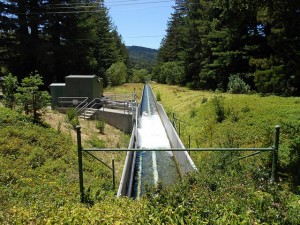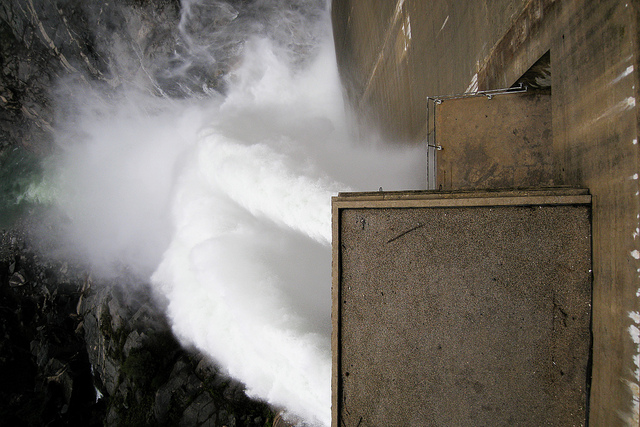On the eve of the 100-year anniversary, the decision to drain Hetch Hetchy Valley to build a reservoir for San Francisco is still actively debated, even as the city’s dependence on the Sierra water has deepened.
San Francisco voters are headed to the polls on Tuesday to decide whether to launch a study into essentially reversing the 1913 federal government decision to build Hetch Hetchy reservoir in Yosemite National Park.
Proposition F would require the city to fork over $8 million to look into dismantling the O’Shaughnessy Dam and finding new ways to replace the reservoir’s storage capacity and hydroelectric power. It would also come up with a plan for bettering San Francisco’s water recycling efforts.
“It’s just a plan, an incremental first step,” said Mike Marshall, executive director of Restore Hetch Hetchy, a group that drove the measure. “And it’s an important conversation for a city like San Francisco that stands on its environmental values, yet we have a water system that’s last in the state in so many ways.”
Opponents counter that the city can make its water system greener without risking its water rights.
“I do believe we should have more recycling and conservation, but that’s not what this proposal is about,” said Susan Leal, the former general manager of the San Francisco Public Utilities Commission, the city agency that runs its water supply. “It’s more than a study. It sets up a bureaucracy. It starts to erode San Francisco’s control over its water.”
The complex and staggeringly costly proposal was the debate topic at a recent Commonwealth Club forum in San Francisco, where Restore Hetch Hetchy advocates squared off against the San Francisco PUC’s Susan Leal along with pro-business advocate Jim Wunderman, CEO of the Bay Area Council.
Nature vs. thirst
The ballot campaign is tense, and fraught with concerns over placing the importance of nature over the Bay Area’s growing thirst for water. So difficult is the question that no major environmental group, including the Sierra Club, is supporting the initiative, and virtually every member of local and state government is against it.
Still, the effort to restore Hetch Hetchy Valley has its die-hard supporters, mainly from a coalition of smaller environmental groups in the Bay Area and from the area around the reservoir.

Proponents argue that restoring Hetch Hetchy Valley would not only renew a long-gone mountain ecosystem and bring life back to the Tuolumne River, it would also make San Francisco more accountable for its water use. Hetch Hetchy’s water comes from pristine Sierra snowmelt, but is consumed for all manner of uses, including watering plants, flushing toilets, and cleaning the streets. San Francisco needs a bigger plan to recycle water and collect rainwater, proponents say.
“Ninety-nine years ago, San Francisco was given a special right: to store part of our water in a national park,” said Marshall. “No other city in the country has that right, and no other city has that adverse impact that our city has on Yosemite National Park, the Stanislaus National Forest and … the wild and scenic Tuolumne River. We have a responsibility to revisit that decision and see if we can’t do better.”
But opponents argue that the loss of the city’s reservoir far outweighs the benefits of restoring a picturesque valley.
“Water security, reliability, pristine quality – these are things that make a region whole,” said Jim Wunderman of the pro-business think tank, the Bay Area Council. “We have all kinds of public problems today, why create another one?”
Delivering water
The Hetch Hetchy water system, constructed and owned by the city of San Francisco, delivers approximately 260 million gallons of water per day to San Francisco, Alameda, Santa Clara and San Mateo counties. While the Hetch Hetchy reservoir is just one of the nine reservoirs that makes up the 160-mile long regional water system, it holds 85 percent of the available water.
Not only does the Hetch Hetchy system provide San Francisco with clean water, it produces 40 percent of San Francisco’s power, which serves more than 400,000 homes and large users such as SF General Hospital, the San Francisco Airport and Muni.
“We created the system a hundred years ago, and we stipulate that we probably wouldn’t do this today,” said Wunderman. “We’d lose a large portion of our power if we were to give up that system and we would be like the rest of California looking for alternate places to store our water.”

But Marshall and other supporters of Prop. F believe that San Francisco can still get its water and generate its power from the Tuolumne River while storing its water elsewhere. Proponents say if the city has to, water storage could be consolidated into eight reservoirs, with Don Pedro Reservoir, downhill from Hetch Hetchy, as a main catch basin.
Such a feat would require a major system overhaul, and could lead to more reliance on water from the already fragile Sacramento-San Joaquin Delta. Moreover, Don Pedro is owned by the Modesto Irrigation District, which recently denied San Francisco’s request to purchase water.
But there are other options, Marshall said.
“We need to look beyond reservoirs, which, in times of climate change, are big evaporation ponds,” said Marshall. “We need to look at underground aquifers and underground storage in the Central Valley. Prop. F requires us to put all of these options on the table.”
Can we afford it?
A project of this scale would also cost in the tens of billions of dollars. Demolition of the dam alone could set the city back as much as $10 billion, according to the SFPUC (although supporters say the cost estimates are inflated).
“Do we really want to invest billions of dollars in this?” said Wunderman. “It’s a wonderful intent, but it’s not something rational given this environment.”
If San Francisco voters approve the measure on Tuesday, it becomes just the first step. To complete the plan, a separate ballot measure in 2016 would have to pass to authorize demolition of the dam.
Heather Mack is a Bay Nature editorial intern.


